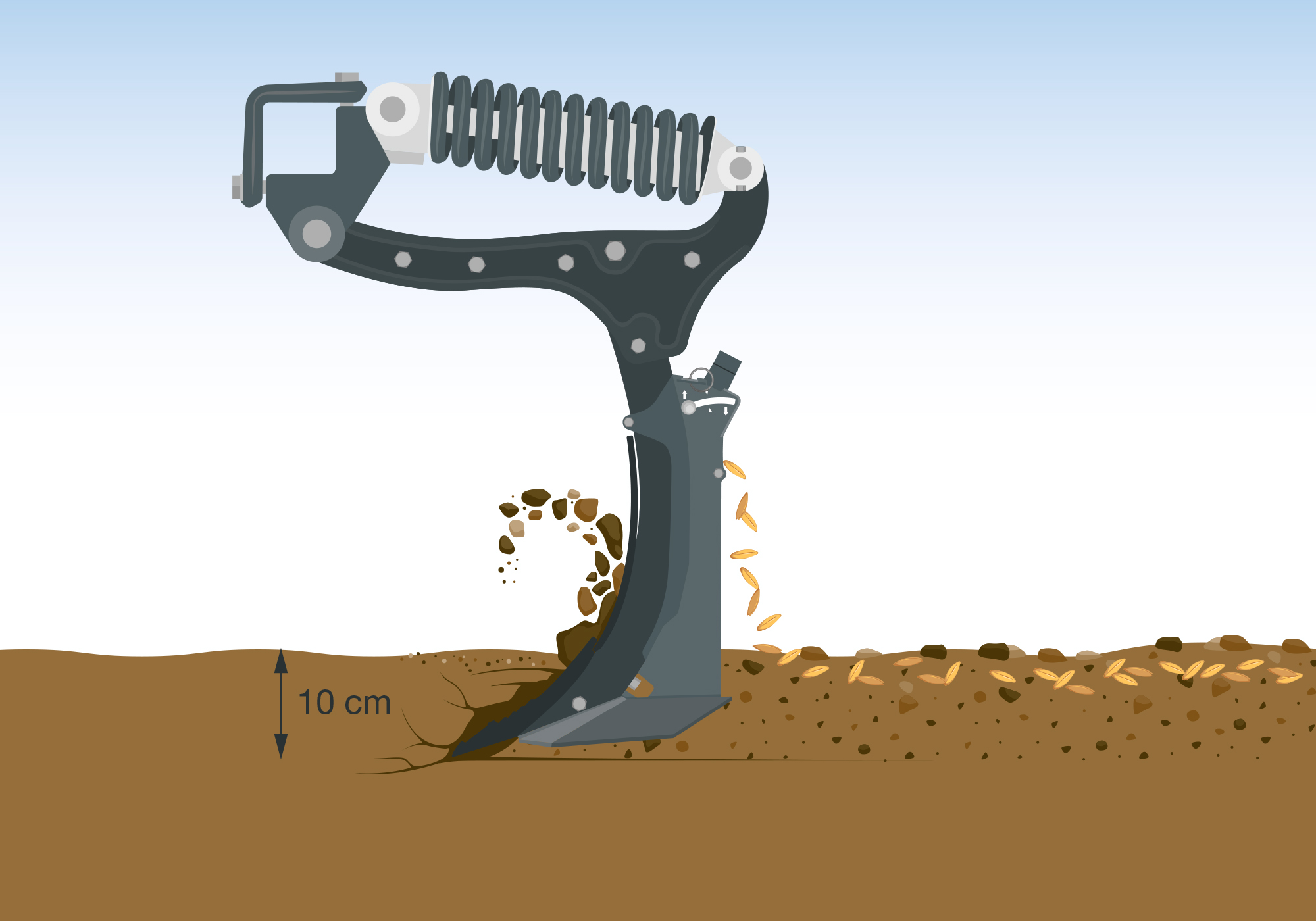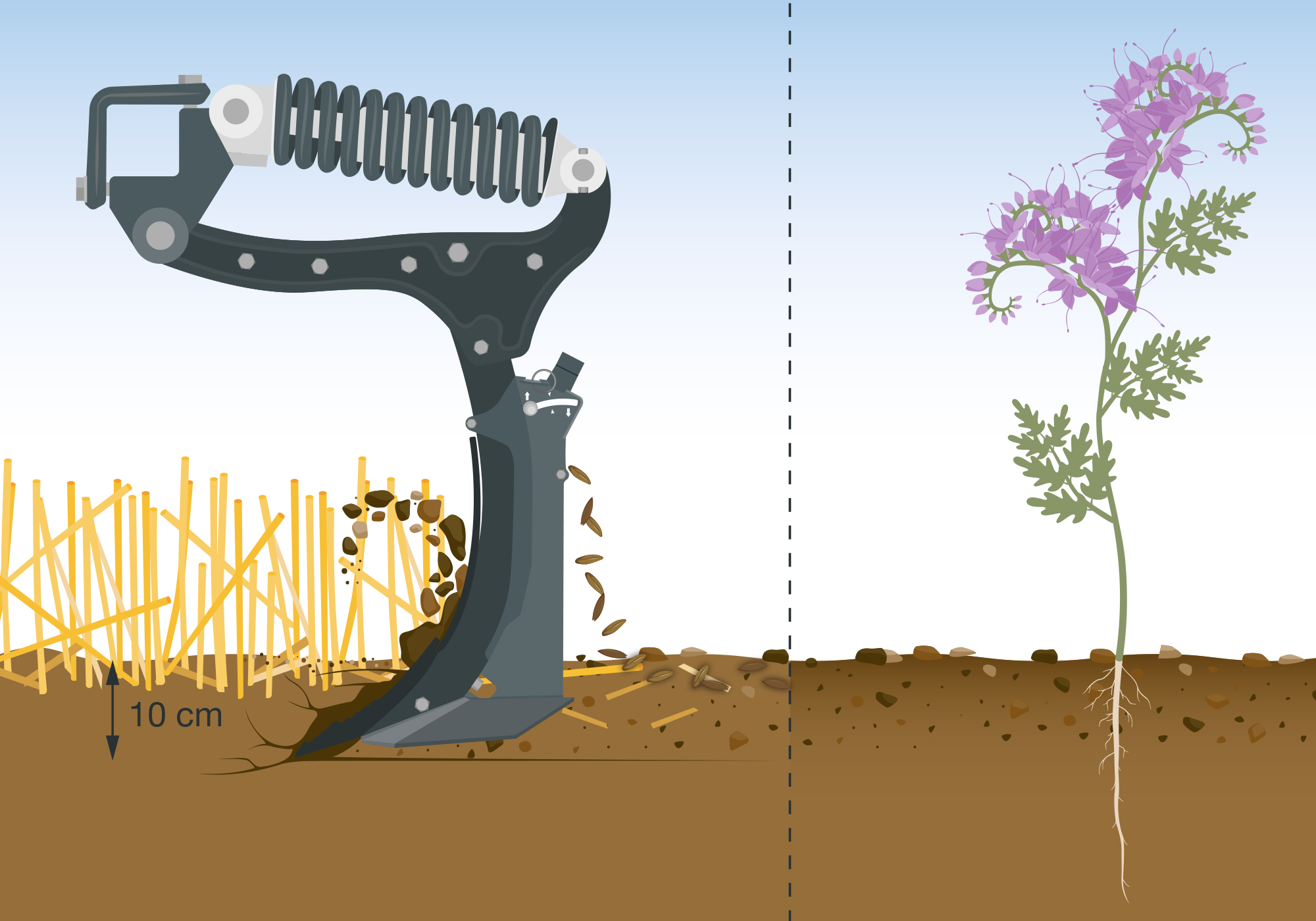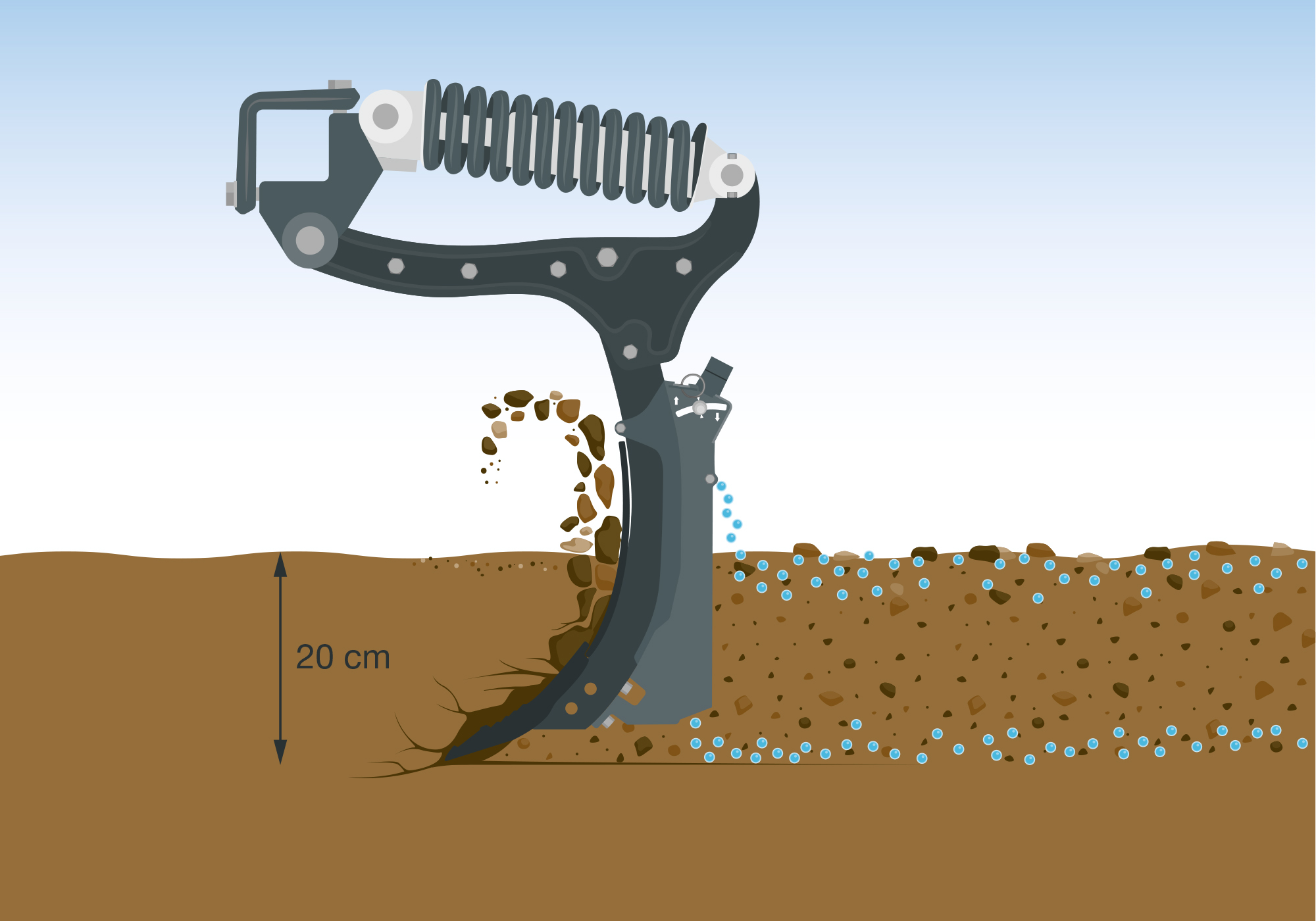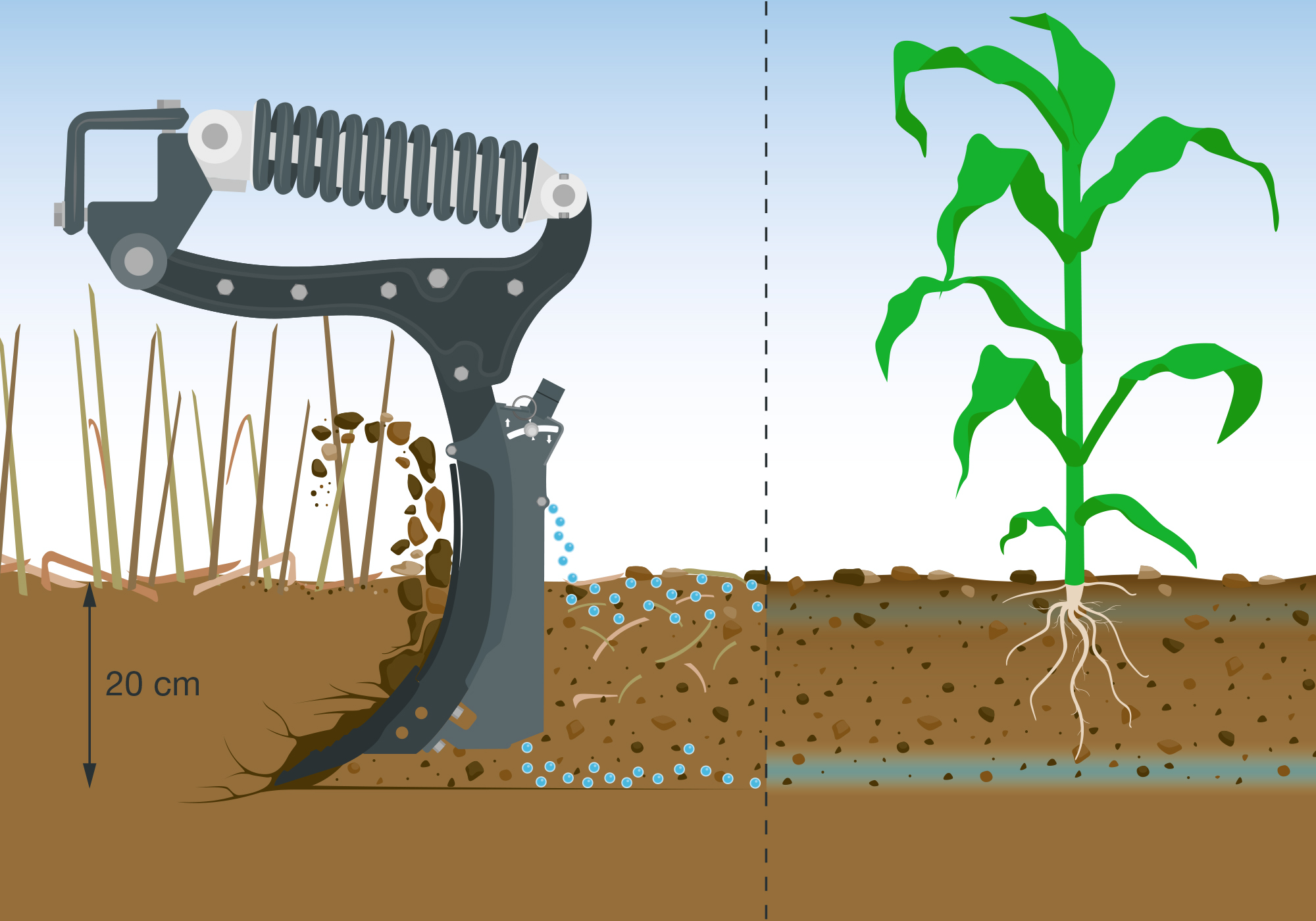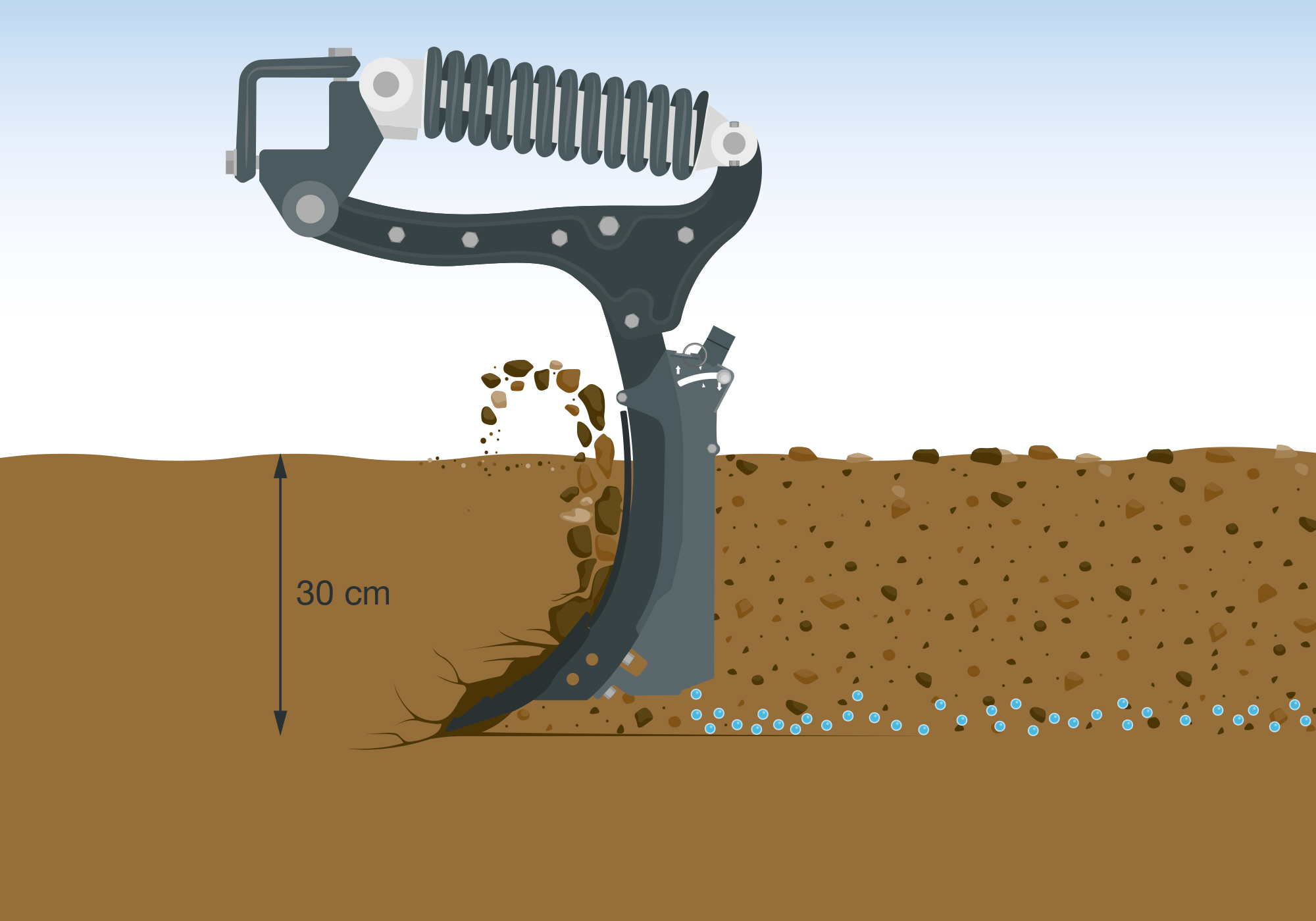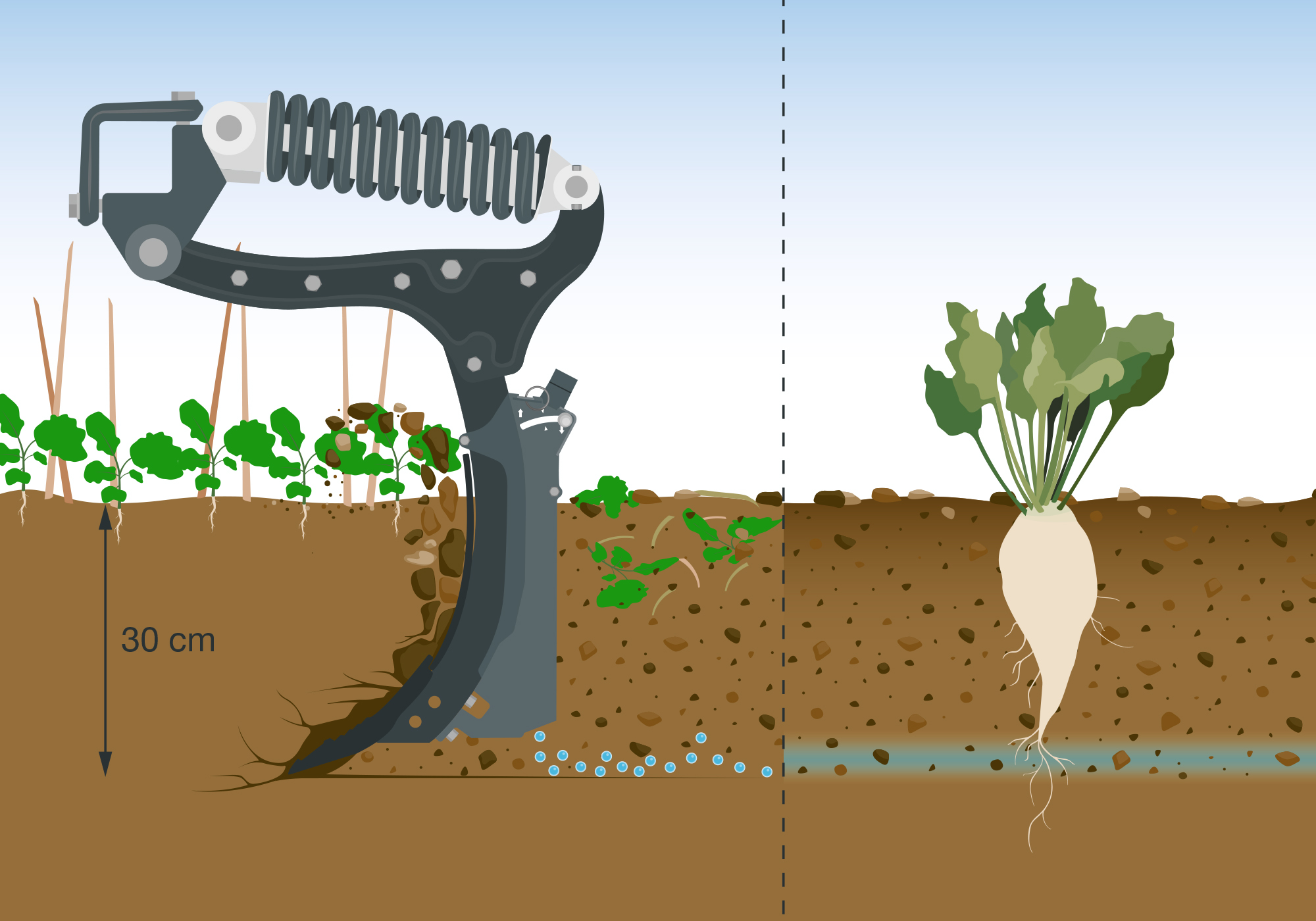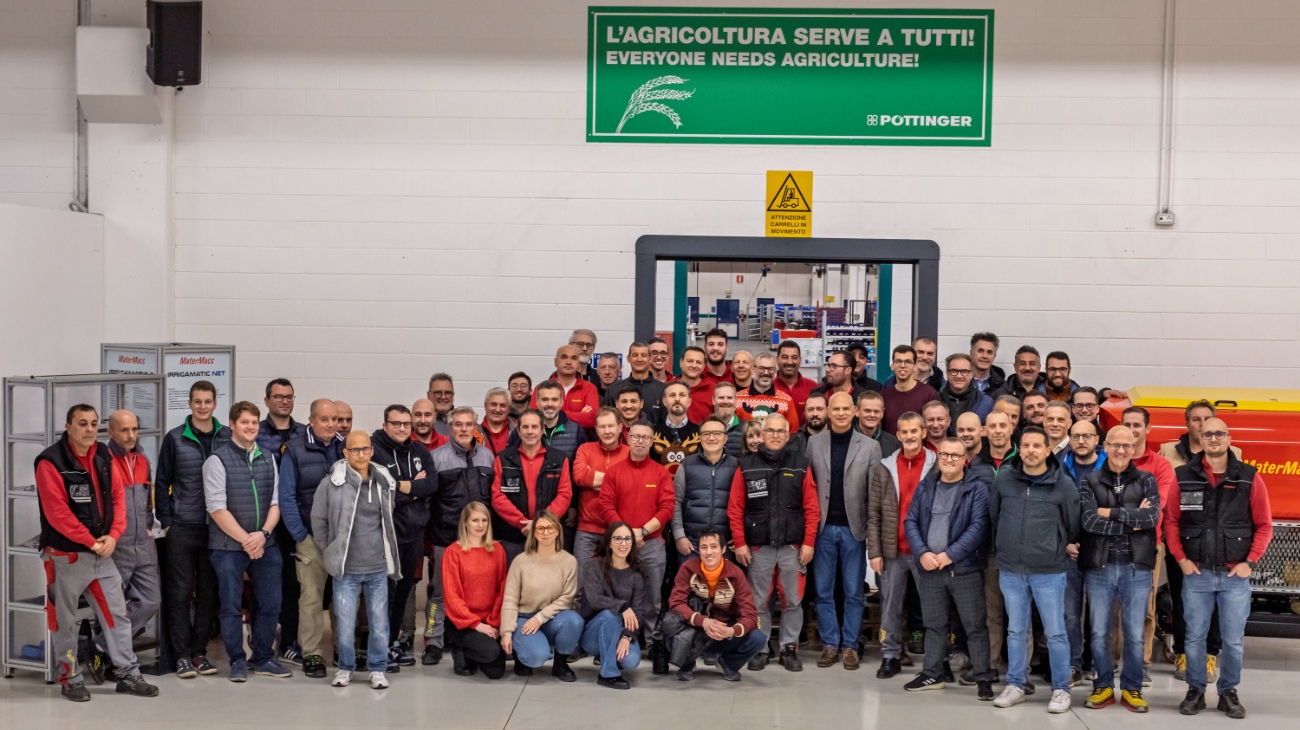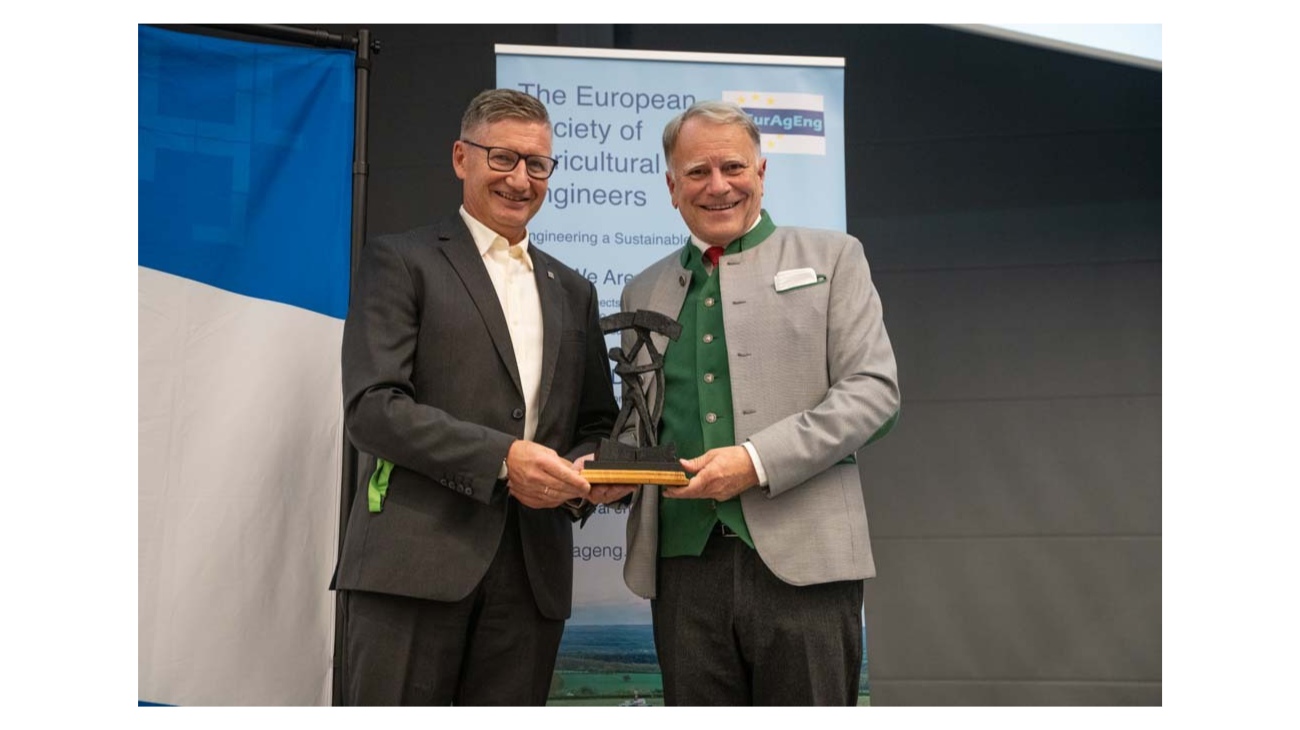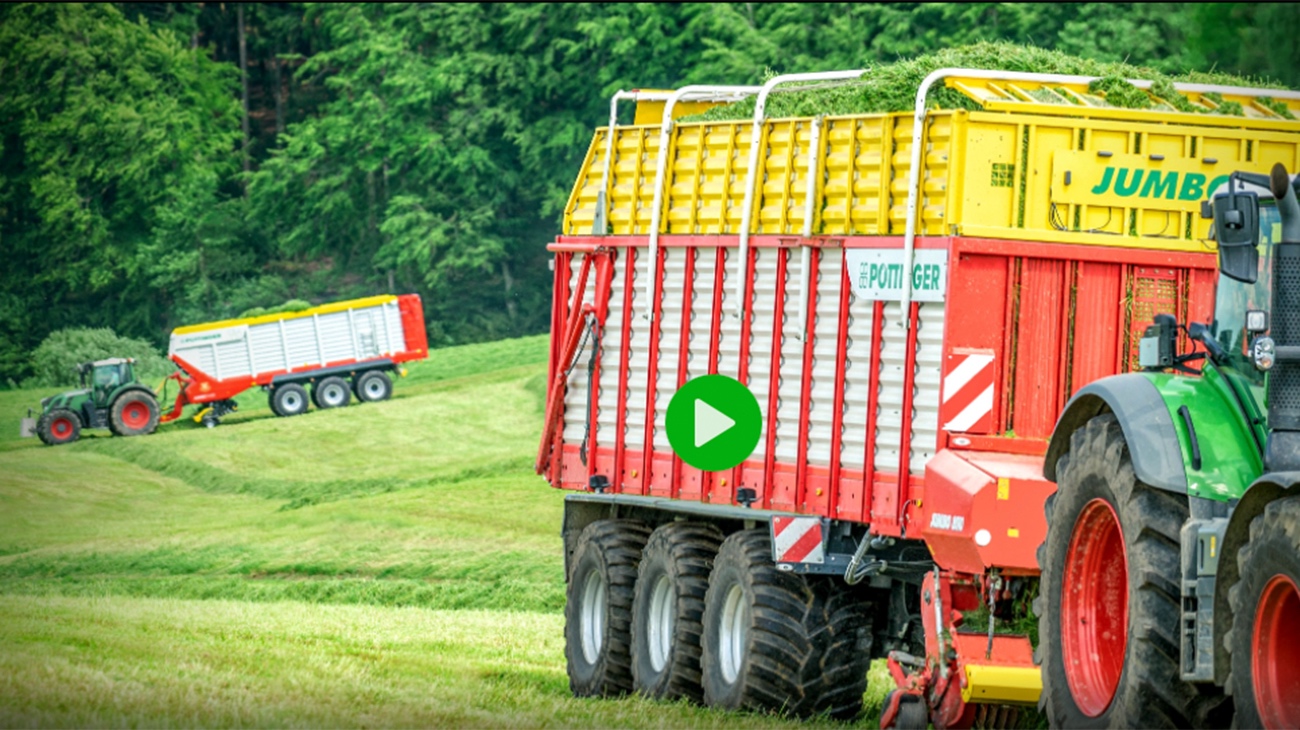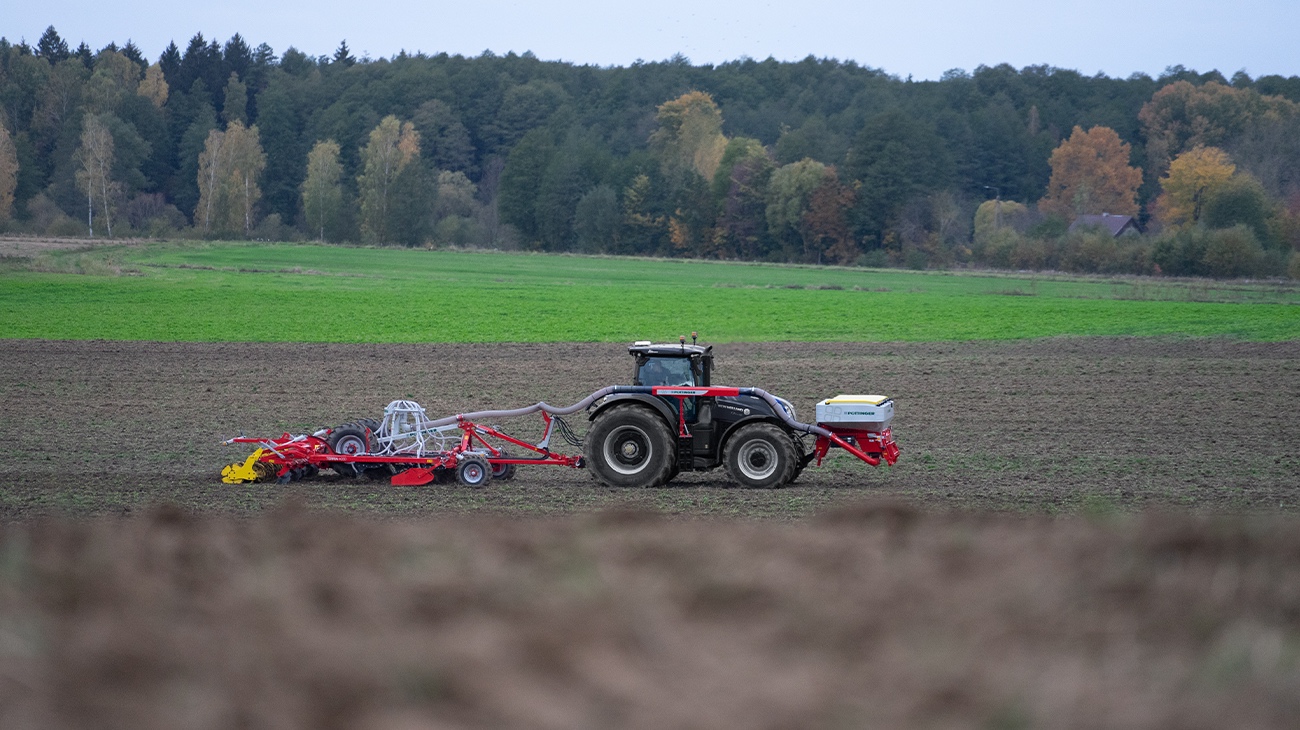
AMICO F and TERRIA supply the soil
Flexible applications
In future, it will be necessary to deploy resources worldwide even more purpose-specifically and efficiently. That is why PÖTTINGER has teamed up the trailed TERRIA stubble cultivator with the AMICO F hopper for resource-saving work. The tillage and simultaneous seed or fertiliser application steps can now be completed in a single pass.
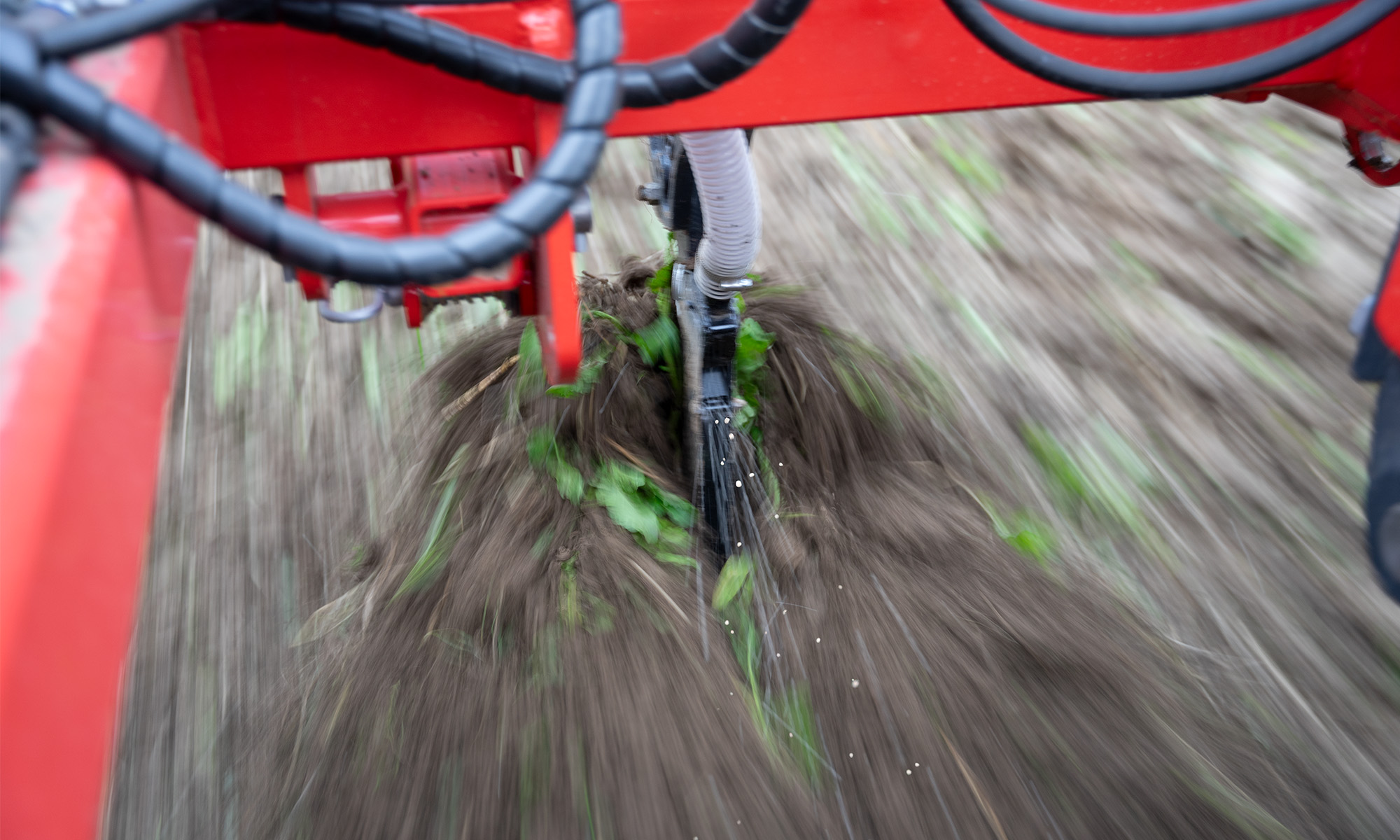
Fertiliser deposited on the surface
Flexible applications
The TERRIA with distribution system can be used for both stubble cultivation as well as deep loosening work. Different deposit depths for the fertiliser allow different levels of soil to be supplied as needed. A total of three deposit depths can be set:
- Top placement: 100% top
- Mixed placement: 50% on top, 50% below
- Down placement: 100% below
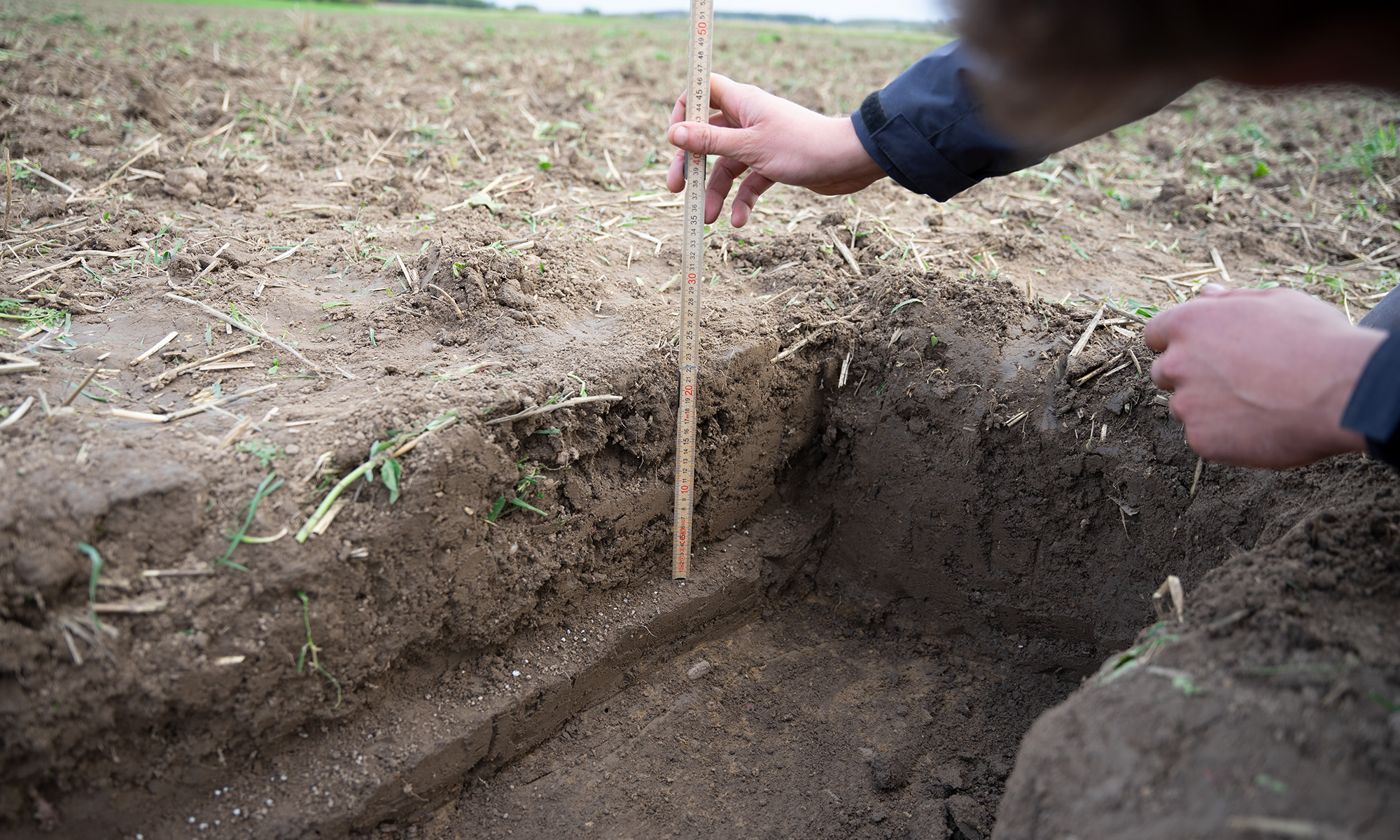
Band of fertiliser placed at lower tillage depth
Working sustainably
The aim of the combined method is to loosen the soil and at the same time apply fertiliser, as it can be made best available to the crop by direct placement in the soil. Precise fertiliser placement prevents loss of effectiveness due to nutrient outgassing and run-off.
Nutrient deficiencies can be precisely compensated in different soil layers using this process. This promotes targeted root growth because the roots are attracted to the fertiliser. A strongly developed root system promotes plant growth and especially the density of the crop.
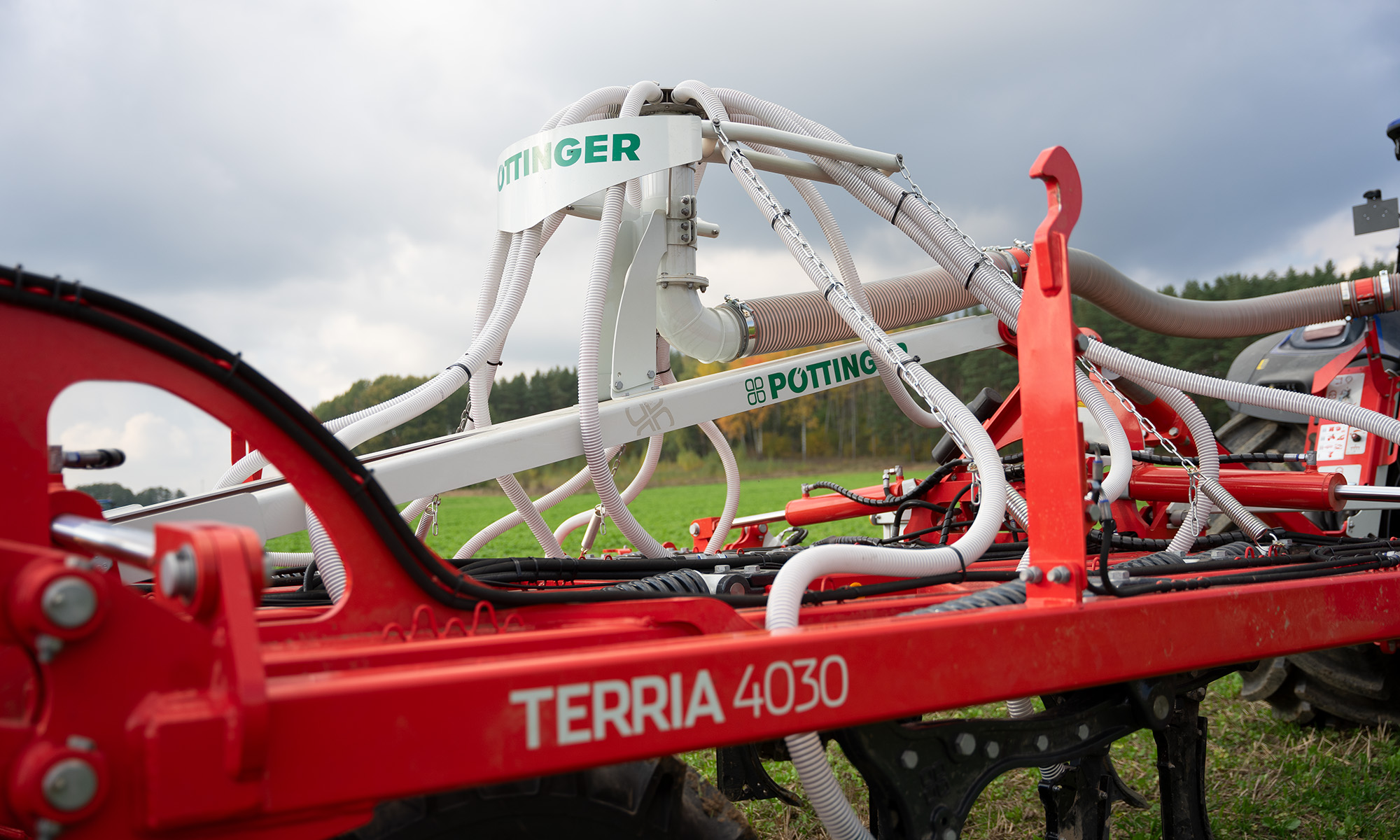
Reliable application thanks to the distribution system
Soil cultivation made easy
The wide tine spacing of TERRIA stubble cultivators ensures reliable operation even with high volumes of organic matter. The incorporation of harvest residues and cover crops is carried out using different types of share and is possible with wings. The fertiliser boots can remain permanently mounted.
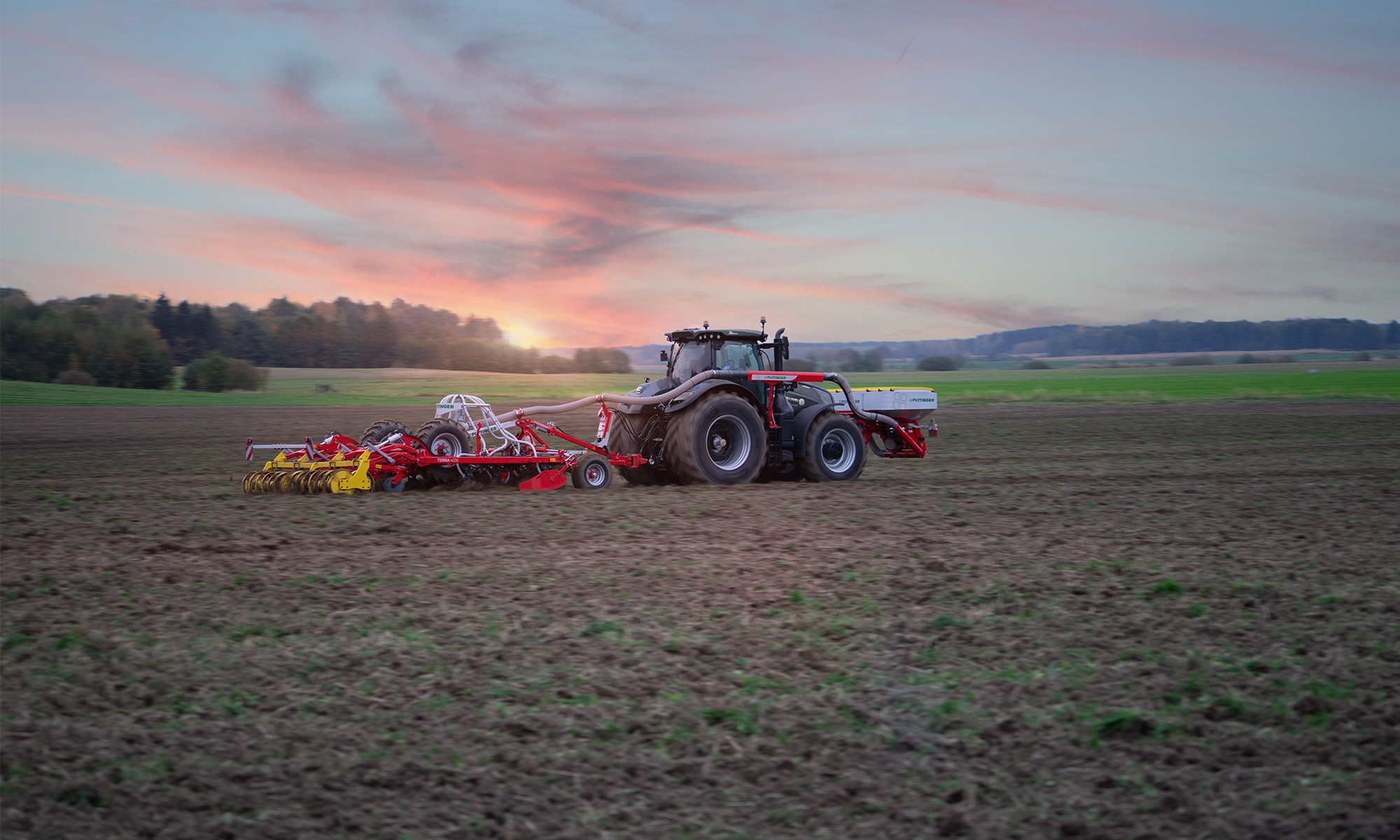
AMICO and TERRIA combine tillage with fertilisation
Choosing the right points
The TERRIA with distribution system can be equipped with three different types of chisel points and wings depending on the stubble cultivation application. Examples for each of the three applications:
- Chisel point with wing shares and shin for top placement
- Chisel point with shin for mixed placement
- Narrow point 40 mm for deep placement
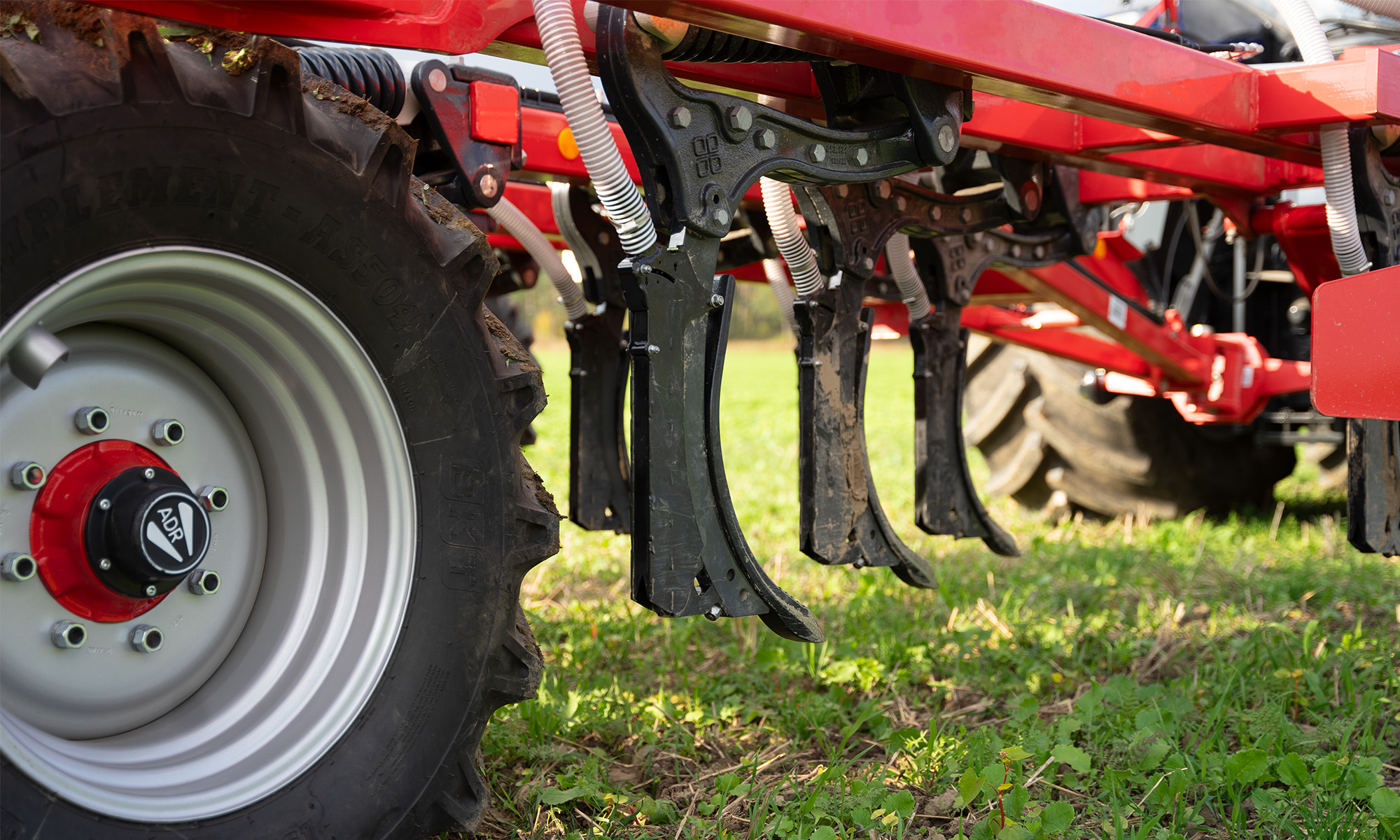
Narrow point with fertiliser boot
Chisel enclosed lower linkage pins with wings
A full-area movement from a working depth of 6 cm is achieved with wing shares. Stubble and cover crops are reliably cut right through, and shallow fertiliser placement within a wide band of up to 80 mm is possible here. This variant is particularly suitable for shallow cultivation in spring, for example, phosphate compensating fertilisation instead of depositing fertiliser during precision drilling.
Chisel point with shin
The chisel point is suitable for coarse loosening and breaking up the soil. Plant residues are thoroughly incorporated and existing furrow bottoms are broken up. The seeds can develop their root systems downward and to each side, so that the plant can absorb nutrients at all levels of the soil.
Narrow point 40 mm
The narrow point guarantees erosion-reducing fertiliser placement to a depth of up to 35 cm. Harmful compaction is broken up, even in heavy, sticky soils so that clods remain in the soil. Primary tillage in autumn with deep placement of the fertiliser, for example, is perfect for preparing seedbeds for beets.
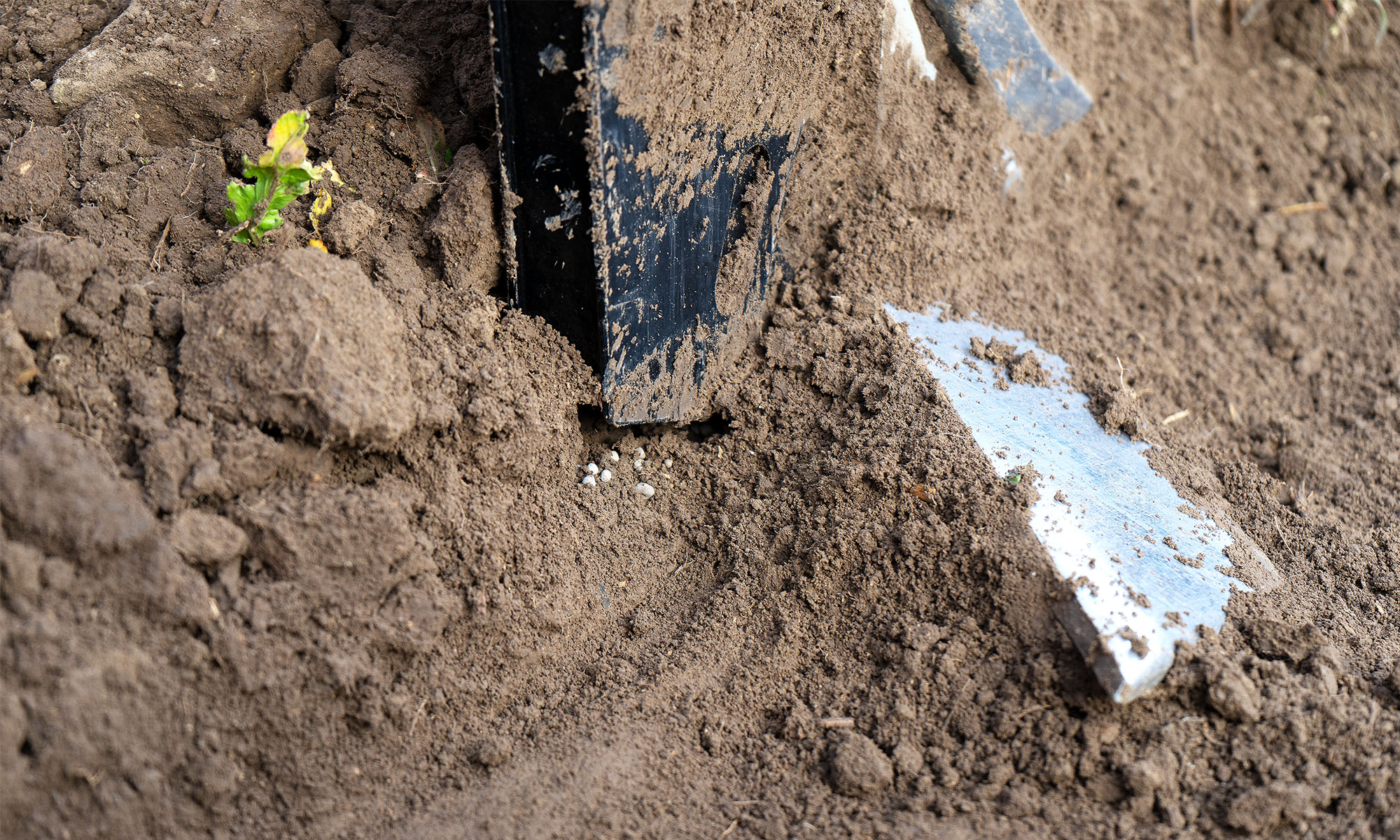
For targeting the fertiliser depth, PÖTTINGER offers a wide range of coulters with different combinations of outlets on the fertiliser boot. This covers a multitude of applications. The possibilities described here indicate the range of practical uses.
Top placement
The outlet on the fertiliser boot is set to 100 % on top so that the seed is mixed directly into the upper layer of soil approx. 0 to 5 cm deep. The application point is right behind the tine leg. For fertilisation, this can be used in the spring when preparing the seedbed so that emission losses are avoided because the fertiliser is immediately covered.
Legumes can be planted as nitrogen collectors as an effective cover crop. It is also possible to sow coarse seed legumes with high seeding rates such as field beans. Prior to drilling wheat, a starter fertiliser can be applied in the autumn with a uniform effect throughout the early development stages of the plant.
Mixed placement
With 50% applied on top and 50 % at the bottom, placement is both near the surface and at the tip of the chisel point. The fertiliser is distributed over the entire working depth, so this is ideally suited for phosphate compensation fertilisation. This method is also suitable for primary tillage in autumn with working depths from 15 cm.
The highest efficiency is achieved here during spring cultivation and is therefore well suited for maize. In this case, the fertiliser is used as a starter in the top layer of soil to help promote early development of the plant so the attraction effect of the deeper deposits draws the root down. As a result, the fertiliser accompanies the root for the whole working depth.
Down placement
The outlet on the fertiliser boot is set to 100% at the bottom of the coulter. This means that fertiliser can be placed further down at up to 35 cm deep. The soil is deeply loosened and fertiliser deposited at the same time. Due to reduced air exchange, the combination of a suitable fertiliser and deep soil placement prevents emission losses.
During autumn tillage, fertiliser is deposited at a deep level where it remains inactive through the winter period. The mineralisation of stabilised nitrogen fertiliser starts at about 8 degrees soil temperature - ideal for sugar beet, which develops roots at this deep level because they are attracted by the fertiliser and then tap into the soil moisture there.

